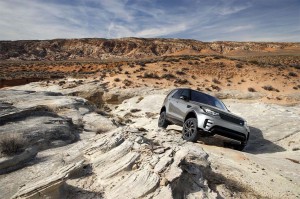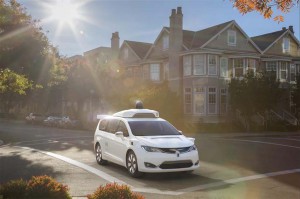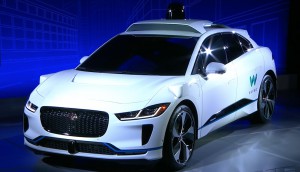
Negotiating a rugged trail is difficult enough for humans, but JLR aims to make it possible for autonomous vehicles.
As a series of recent collisions has demonstrated, it’s not easy to develop cars capable of driving on their own on a regular roadway. Now, imagine the challenge that would be involved in programming an autonomous vehicle to operate off-road, as well.
But that’s precisely what Jaguar Land Rover is hoping to do with its new Project Cortex, the British automaker saying it will invest nearly $5 million to come up with vehicles that have all-terrain, all-weather autonomous capability.”
“Self-driving is an inevitability for the automotive industry,” explained Chris Holmes, JLR’s director of Connected and Autonomous Vehicle Research. “It’s important that we develop our self-driving vehicles with the same capability and performance customers expect from all Jaguars and Land Rovers.”
That’s a pretty tall order when one considers what it takes to achieve even partial hands-free driving. Manufacturers not only have to equip their vehicles with a range of camera and laser, radar and sonar sensors, but also develop extensive, high-resolution, 3D maps that are accurate enough to keep a vehicle from straying more than a few inches in its lane.
(Waymo set to purchase 62k Chrysler Pacifica hybrid minivans for ride-share service. Click Here for the story.)
When you’re going off-road there are no lane markers and, except for a handful of well-traveled trails, there’s likely to be no way to pre-map a route. So, like a human driver humping it off-road, the sensor fusion system will have to go the extra mile, so to speak, and make a lot of judgements on the fly about which is the safest route to travel, even when there’s a log, boulder or stream in the way.
Cortex will be working with the University of Birmingham, in the UK, as well as machine learning company Myrtle AI, to “develop the technology through algorithm development, sensor optimization and physical testing on off-road tracks in the UK,” the company explained in a statement.
The goal is to create a technology JLR calls “5D,” fusing the signals from all the sensors together to create an even more detailed view of the world than the human eyes and ears can create. That will be used to control a range of vehicle functions, including steering, throttle, transmission and braking.
Like other AI systems, the system is expected to improve its understanding of the world over time, and what’s learned by one vehicle is shared with others.

Navigating even well-paved, well-marked roads has been a challenge for autonomous vehicles developers, like Waymo.
“Cortex gives us the opportunity to work with some fantastic partners whose expertise will help us realize this vision in the near future,” said Holmes, though exactly what that translates into isn’t quite certain.
(Click Here for more Jaguar Land Rover profits falling due to declining diesel sales.)
What is clear is that there’s an industry-wide race to bring autonomous and even more advanced, fully driverless technologies to market, and in a hurry.
The first of what experts call Level 2 systems, capable of limited hands-off operation – such as Audi’s Traffic Jam Pilot, Cadillac’s Super Cruise and Tesla’s Autopilot – are already on the market. More advanced Level 3 systems that can operate pretty much hands-free in many, if not most, on-road situations are expected to be available for retail applications by late this decade or early in the 2020s. These will continue to require a driver remain at the ready to take over operations in an emergency or on roads not mapped or marked to the necessary level.
Still more advanced, driverless vehicles are already in testing. Waymo, the Google spin-off, wants to put them into commercial use in a ride-sharing service that will launch in Phoenix later this year and then expand to other markets. Jaguar will provide up to around 20,000 of the new I-Pace battery SUVs for use by Waymo.
General Motors’ Maven subsidiary is expected to take similar steps next year, and Uber and Lyft hope to follow. These Level 4 systems will still have some limits in terms of where and when they can operate. Particularly challenging will be prepping them to operate in inclement weather conditions, especially snow and ice.
(For more on the Waymo/JLR partnership, Click Here.)
JLR’s Cortex is pushing the technology to the limits. What the automaker isn’t saying is whether a driver will be required to remain at the ready, as with Level 2 and 3 systems, however. But even if that’s the case, the ability to operate, quite literally, outside the lines, would be a significant development.


Does JLR actually believe their ads and think anyone takes their vehicles off road? A flooded Whole Foods parking lot is the worst it’ll see.